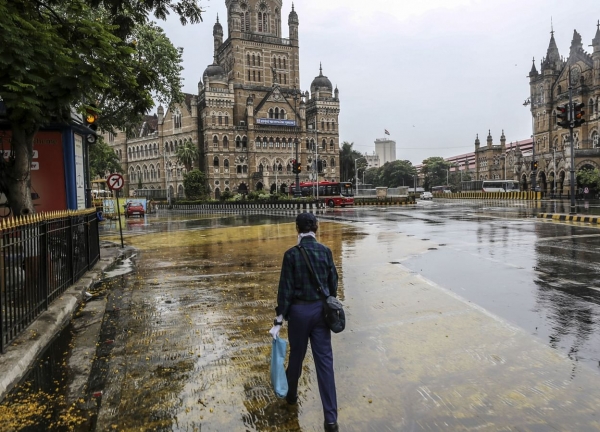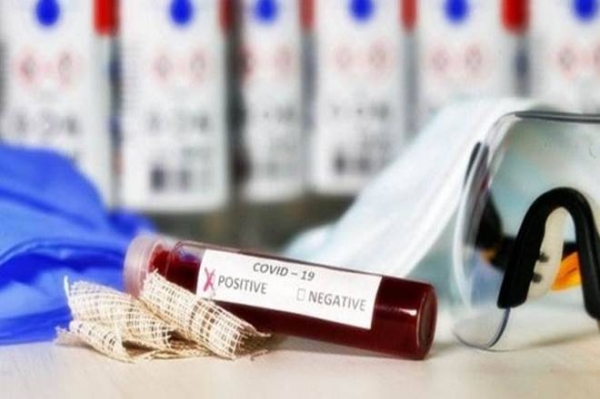Government announces new Covid-19 guidelines from December 1
- There must be strict control of the perimeter to ensure that there is no movement of people in or out of these areas, with the exception of medical emergencie
- by B2B Desk 2020-11-26 06:45:17
Amid a surge in Covid-19 cases in some states across the country and central government efforts to contain the spread, the Interior Ministry (MHA) issued an order on Wednesday with guidelines for surveillance, containment, and caution, which will be effective from December 1, 2020, and remains valid until the end of the month.
The MHA also directed states to strictly enforce containment measures, standard operating procedures (SOPs) on various activities, proper behavior and surveillance of COVID-19, and crowd regulation.
"The main focus of the guidelines is to consolidate the significant gains made against the spread of COVID-19, which are reflected in the steady decline in many active cases in the country," the ministry said in a statement.
Local, police and municipal authorities will be responsible for ensuring that the established containment measures are strictly followed. States and UT, based on their assessment of the situation, may impose local restrictions to contain the spread of COVID-19.
Here is a lowdown on the new guidelines issued by the Centre:
Surveillance and Containment
States/ UTs to careful demarcation of the containment areas by the county authorities, at the micro-level, subject to the guidelines established by the Department of Health and Family Welfare in this regard.

Within the demarcated containment Zones, containment measures, as stipulated by the Ministry of Health, Family and Family, must be strictly followed, including:
Only essential activities are allowed in containment areas.
- There must be strict control of the perimeter to ensure that there is no movement of people in or out of these areas, with the exception of medical emergencies, and to maintain the supply of essential goods and services.
There should be extensive monitoring from house to house by monitoring teams trained for this purpose.
The test must be performed according to the specified protocol.
- A contact list should be made for all individuals who tested positive, along with tracking, identifying, quarantining, and following up on contacts for 14 days (80 percent of contacts will be traced within 72 hours)
Ensure rapid isolation of COVID-19 patients in-home/treatment facilities (subject to adherence to home isolation guidelines).
Clinical interventions should be administered as prescribed.
- Surveillance for ILI/ SARI should be carried out in health facilities, mobile awareness units, or through fever clinics in isolation areas.
Awareness should be raised in communities about appropriate behavior for COVID-19.
- Local, law enforcement, and municipal authorities should be responsible for ensuring that prescribed containment measures are strictly followed and Utah / State governments should ensure that the officers involved are held accountable in this regard.
COVID-Appropriate behavior
The ministry also directed the states and the UT government to take all necessary measures to promote appropriate behavior for COVID-19 and ensure the strict application of masks, hand hygiene, and social distancing.

To enforce the core requirement of wearing face masks, states and UT may consider administrative measures, including corresponding fines, for people who do not wear face masks in public places and workplaces.
For observance of social distancing in crowded places, especially in markets, weekly bazaars, and public transport, the Ministry of Health and Family Welfare will issue the standard operating procedure, as indicated in the statement.
National Directives for the management of COVID-19 should be continued across the country, to enforce appropriate behavior for COVID-19.
Strict adherence to the prescribed SOPs
All activities outside the containment areas are allowed, except the following, which are allowed with some restrictions:
International passenger air travel, as permitted by the MHA.
Cinemas halls and theaters with a capacity of up to 50 percent.
- Swimming pools, only for the training of sportspersons.
- Exhibition halls, only for business to business (B2B) purposes.
- Social / religious / sports/entertainment / educational/cultural/religious gatherings, with a maximum of 50 percent of the capacity of the room, with a maximum of 200 people in closed spaces; And the keeping of the size of the ground/ space in the view, in open spaces.
"However, based on their assessment of the situation, UT governments may reduce the ceiling to 100 people or less, in closed spaces," MHA further said,
Local restrictions
States and UTs, based on their assessment of the situation, may impose local restrictions to contain the spread of COVID-19, such as night curfew.
However, state governments cannot enforce any local closures (state/district/subsection/city level), outside of the containment areas, without prior consultation with the central government, clarified the ministry in its order.
States and UT must also enforce social distancing in offices. In cities, where the weekly positive case rate is higher than 10%, interested states should consider implementing staggered working hours and other appropriate measures to reduce the number of employees attending office at the same time, thus ensuring social distancing.
No restriction on Inter-State and intra-State movement
There will be no restrictions on the movement of people and goods between and within countries, including those designated for trade across land borders under treaties with neighboring countries. No separate electronic permission/approval/authorization is required for these transactions.
Protection for vulnerable persons
Vulnerable people, i.e. people over 65 years old, people with joint diseases, pregnant women, and children under 10 years old are advised to stay at home, except to meet basic requirements and health purposes.
Use of Aarogya Setu
The use of the Aarogya Setu mobile app will continue to be encouraged.
India, meanwhile, reported 44,376 new Covid-19 cases in the past 24 hours, bringing the number of cases so far to 92,22,217, according to the Union Ministry of Health and Family Welfare on Wednesday.
The total number of cases in the country now stands at 92,22,217 including 86,42,771 recoveries and 4,44,746 active cases. With 480 new deaths, the cumulative number of deaths has reached 1.34,218.
The country reported 481 deaths from the disease in the past 24 hours.
Today is the 18th day that India reported fewer than 50,000 cases per day. The last time new cases crossed the 50,000 thresholds was on November 7.
With 6,224 new COVID-19 cases in the past 24 hours, Delhi reported the highest number of daily tally among states.
Also Read: All that you need to know about the country’s first COVID vaccine

POPULAR POSTS
Loan EMIs to Drop as RBI Slashes Repo Rate - Full MPC December 2025 Highlights
by Shan, 2025-12-05 11:49:44
Zoho Mail vs Gmail (2025): Which Email Platform Is Best for Businesses, Startups, and Students?
by Shan, 2025-10-09 12:17:26
PM Modi Launches GST Bachat Utsav: Lower Taxes, More Savings for Every Indian Household
by Shan, 2025-09-24 12:20:59
$100K H-1B Visa Fee Explained: Trump’s New Rule, Clarifications & Impact on Indian Tech Workers
by Shan, 2025-09-22 10:11:03
India-US Trade Deal Soon? Chief US Negotiator Arrives in Delhi as Talks Set to Begin Tomorrow
by Shan, 2025-09-15 11:54:28
Modi Meets Xi: Trump’s Tariffs, Strategic Autonomy, and the Future of Asia’s Power Balance
by Shan, 2025-09-03 06:40:06
Google Claims Gemini AI Uses Just ‘Five Drops of Water’ Per Prompt, Sparks Debate
by Shan, 2025-08-22 12:34:27
RECENTLY PUBLISHED

Pine Labs IPO 2025: Listing Date, Grey Market Premium, and Expert Outlook
- by Shan, 2025-11-05 09:57:07

The Agentic Revolution: Why Salesforce Is Betting Its Future on AI Agents
- by Shan, 2025-11-05 10:29:23

Top 10 Insurance Companies in India 2026: Life, Health, and General Insurance Leaders Explained
- by Shan, 2025-10-30 10:06:42

OpenAI Offers ChatGPT Go Free in India: What’s Behind This Big AI Giveaway?
- by Shan, 2025-10-28 12:19:11

Best Silver Investment Platforms for 2025: From CFDs to Digital Vaults Explained
- by Shan, 2025-10-23 12:22:46





 Subscribe now
Subscribe now 